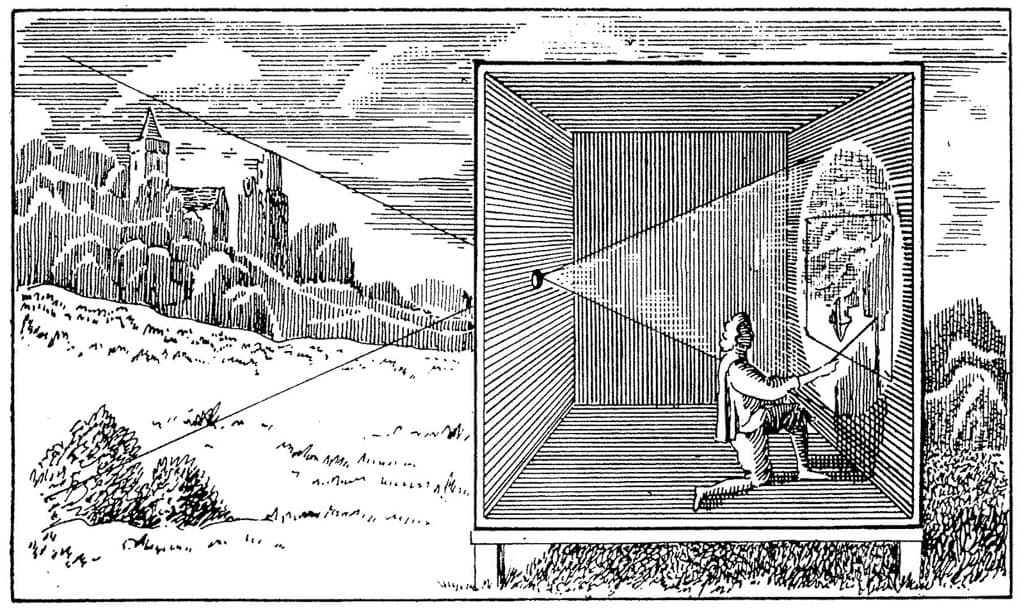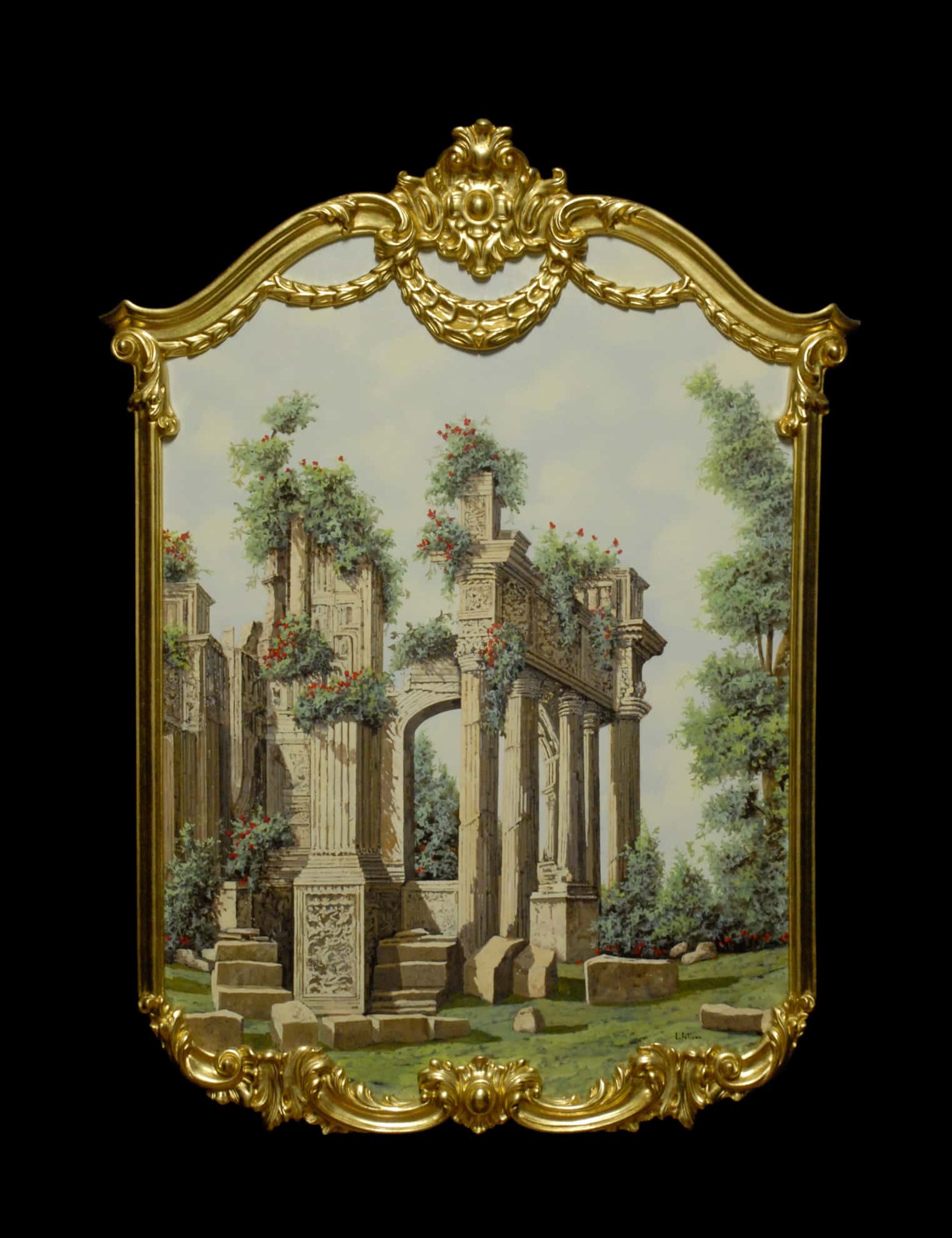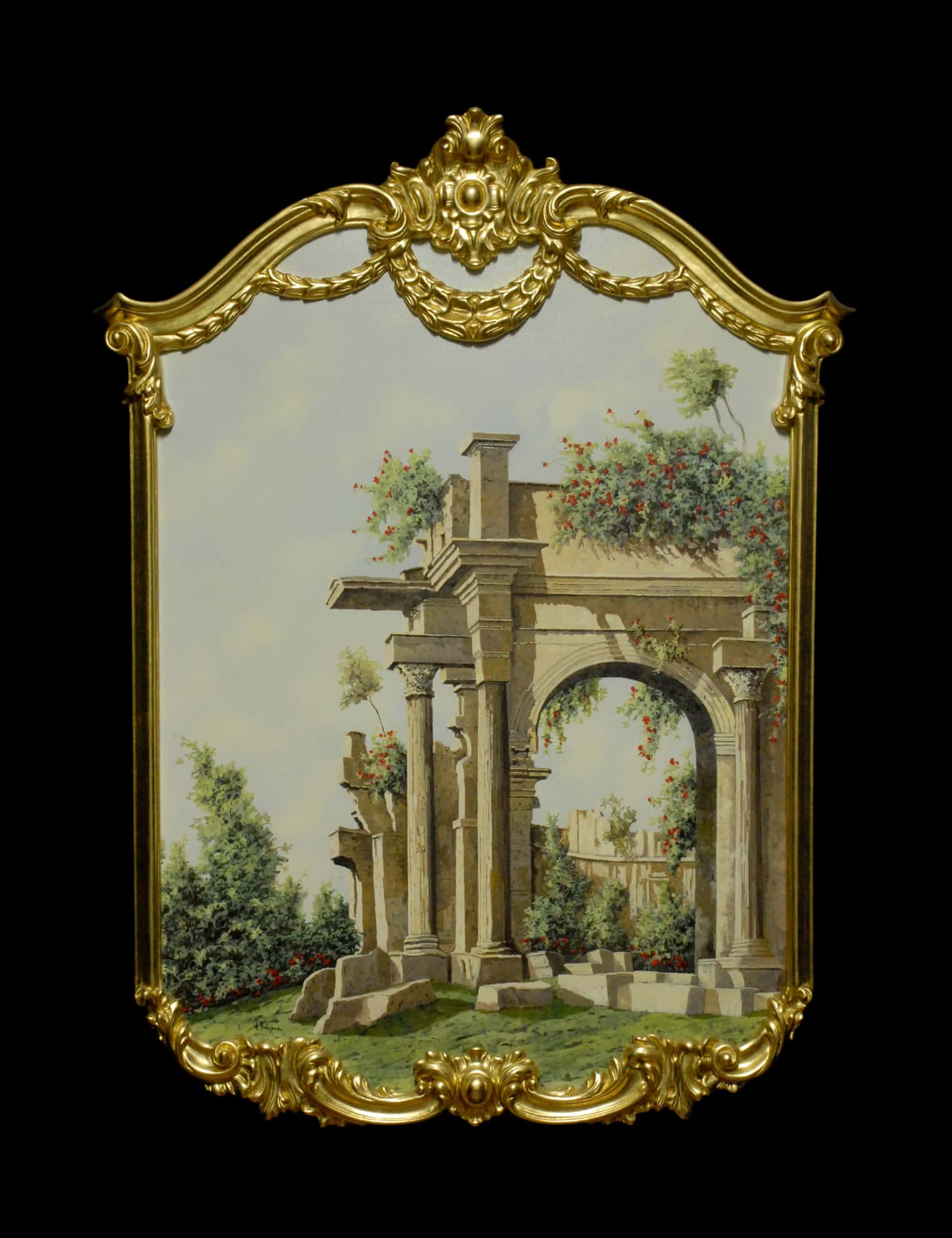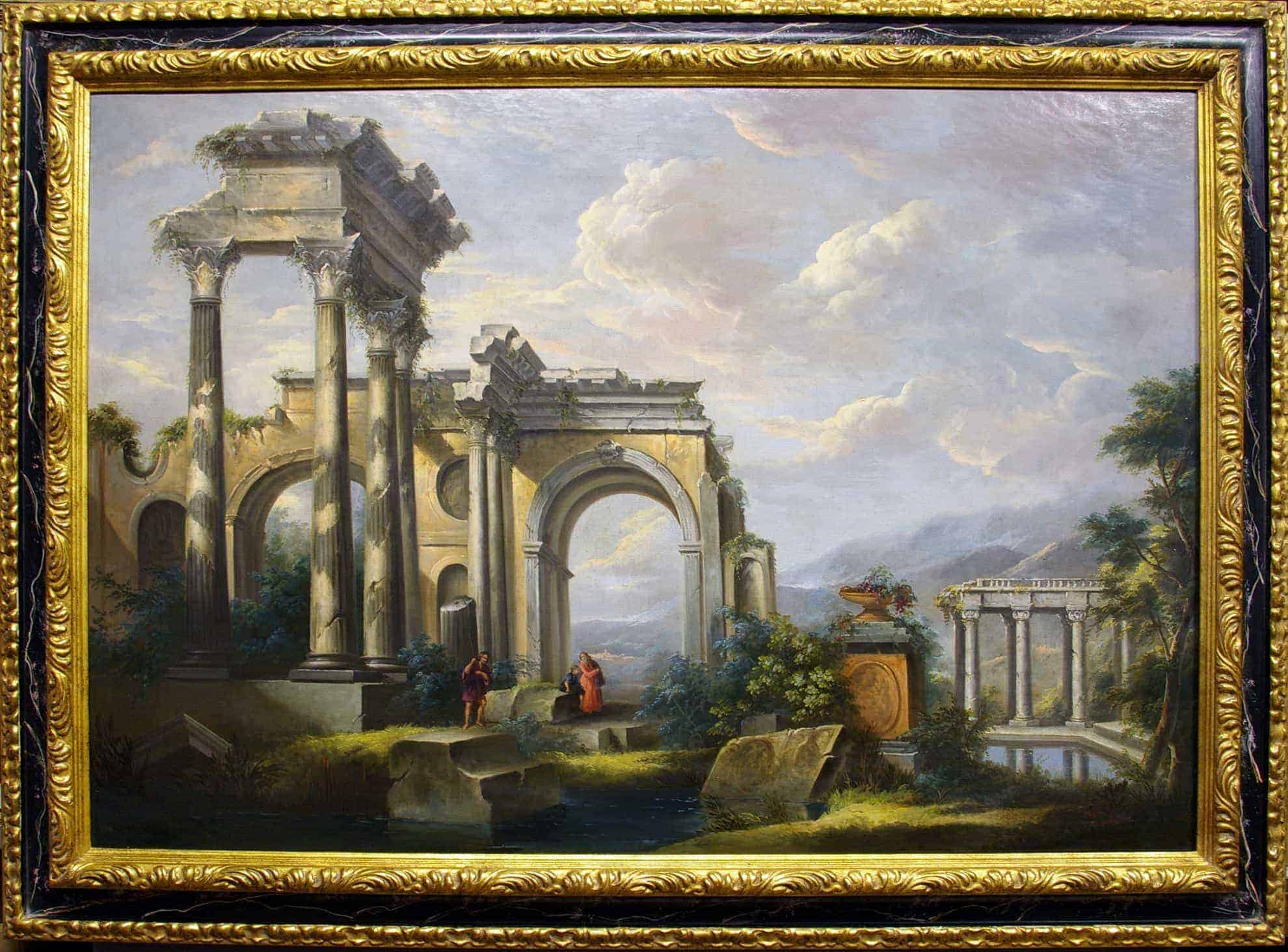Vedutism and Capricci
THE CHARM OF ITALY’S SETTECENTO
Vedutism is a pictorial genre that flourished during the second half of the Seventeenth century in the Netherlands.
In Italy it developed and spread particularly during the Enlightenment phase of the Eighteenth century, or Settecento – one of the most fruitful periods in Italian art – and generated depictions of architectural perspectives and scenes from cities with glorious histories, like Rome and Venice.
In the latter especially the art of Vedutism was practiced in an extremely unique and refined way.
“The veduta is an objective document of historical places or events, commissioned by both local clients and foreign visitors.”
The protagonists
Some painters, including Giovanni Antionio Canal – better known as Canaletto – his nephew Bernardo Bellotto and Francesco Lazzaro Guardi, each one with a specific technical and compositional style, were the protagonists of the fascinating art of the veduta and the capriccio (an imaginary architectural composition)
Traits of the Veduta
The Technical contribution
of the Camera
Vedutism is a pictorial genre that flourished during the second half of the Seventeenth century in the Netherlands. In Italy it developed and spread particularly during the Enlightenment phase of the Eighteenth century, or Settecento – one of the most fruitful periods in Italian art – and generated depictions of architectural perspectives and scenes from cities with glorious histories, like Rome and Venice. In the latter especially the art of Vedutism was practiced in an extremely unique and refined way.

ENLIGHTENED VISITORS
It was these enlightened visitors who drew cultural nourishment from the accurate study of the most important Italian cities and to whom the paintings, which represent the various aspects of social life that they had witnessed, served as reminders of their personal observations.
An exemplary case of this phenomenon is Goethe, who at the end of the century drew some of the views that he had had the chance to see during his journey to Italy.
The images of urban perspectives were sometimes commissioned by those who were not able to embark on a long journey but who desired nevertheless to learn about such famous places, at least through their representations. For this reason, these vedute are generally very accurate.
“Cities like Rome and Venice were extremely attractive because of their extraordinary charm, the beauty and the pomp of their ceremonies and the traces of the past."
The Camera Obscura
Actually, in order to obtain an even greater truthfulness than what the human eye could achieve, a special device was used, the camera obscura, an instrument (known since ancient times) that – exactly as happens in a dark room – by allowing light to pass inside of it through a small hole, projected the image of reality onto an opposite surface, where it appeared upside down and out of focus. Once turned upright and made clear with lenses and mirrors, and reflected onto a screen of oiled paper or a frosted glass, the image was traced over by hand.

ANNIBALE ESPOSTI
The Annibale Esposti collection inspired by Veneto Vedutism looks precisely at the work of these great masters. It is a series of handmade paintings of great pictorial quality, which offer techniques and subjects from this fascinating era in the history of art.
ORIGINAL HANDPAINTING, OIL ON OLD MADE CANVAS. COLLECTION BY ANNIBALE ESPOSTI, TRIBUTE TO “CAPRICCIO THEME”





 English
English  Italiano
Italiano